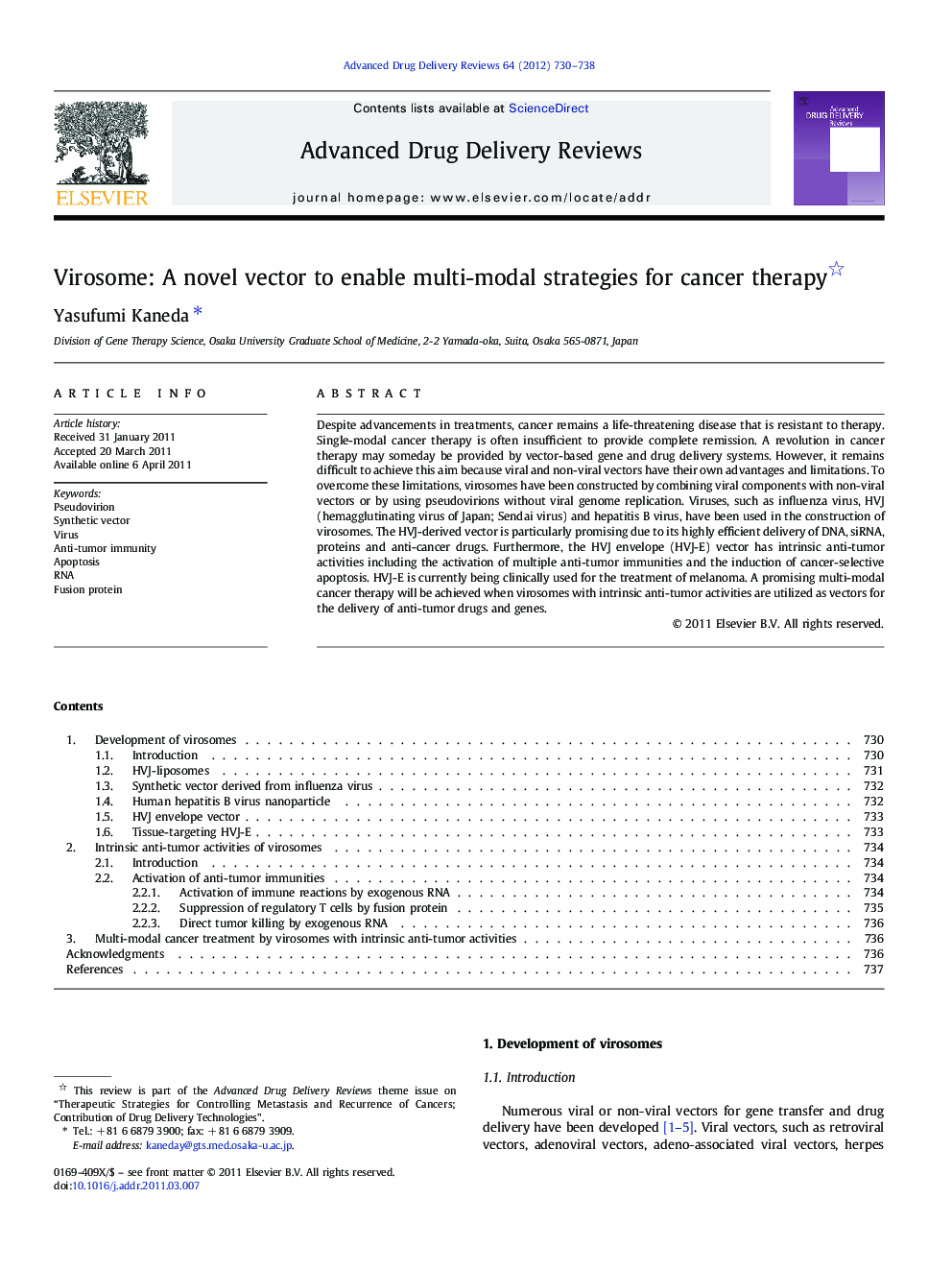| Article ID | Journal | Published Year | Pages | File Type |
|---|---|---|---|---|
| 2071212 | Advanced Drug Delivery Reviews | 2012 | 9 Pages |
Despite advancements in treatments, cancer remains a life-threatening disease that is resistant to therapy. Single-modal cancer therapy is often insufficient to provide complete remission. A revolution in cancer therapy may someday be provided by vector-based gene and drug delivery systems. However, it remains difficult to achieve this aim because viral and non-viral vectors have their own advantages and limitations. To overcome these limitations, virosomes have been constructed by combining viral components with non-viral vectors or by using pseudovirions without viral genome replication. Viruses, such as influenza virus, HVJ (hemagglutinating virus of Japan; Sendai virus) and hepatitis B virus, have been used in the construction of virosomes. The HVJ-derived vector is particularly promising due to its highly efficient delivery of DNA, siRNA, proteins and anti-cancer drugs. Furthermore, the HVJ envelope (HVJ-E) vector has intrinsic anti-tumor activities including the activation of multiple anti-tumor immunities and the induction of cancer-selective apoptosis. HVJ-E is currently being clinically used for the treatment of melanoma. A promising multi-modal cancer therapy will be achieved when virosomes with intrinsic anti-tumor activities are utilized as vectors for the delivery of anti-tumor drugs and genes.
Graphical abstractFigure optionsDownload full-size imageDownload high-quality image (881 K)Download as PowerPoint slide
